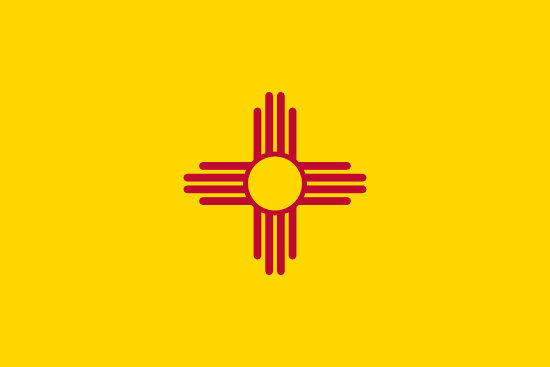
New Mexico
- Statehood Year:
- 1912
- Capital:
- Santa Fe
- Largest Cities:
- Albuquerque, Las Cruces, Rio Rancho
- Abbreviation:
- NM
New Mexico is a state in the Southwest region of the United States, known for the Sangre de Cristo Mountains, ancient pueblos, and desert landscapes. It has a population of 2,139,350, making it the 36th most populated state in the country. The capital city is Santa Fe. New Mexico has a federal research facilities and growing film industry.